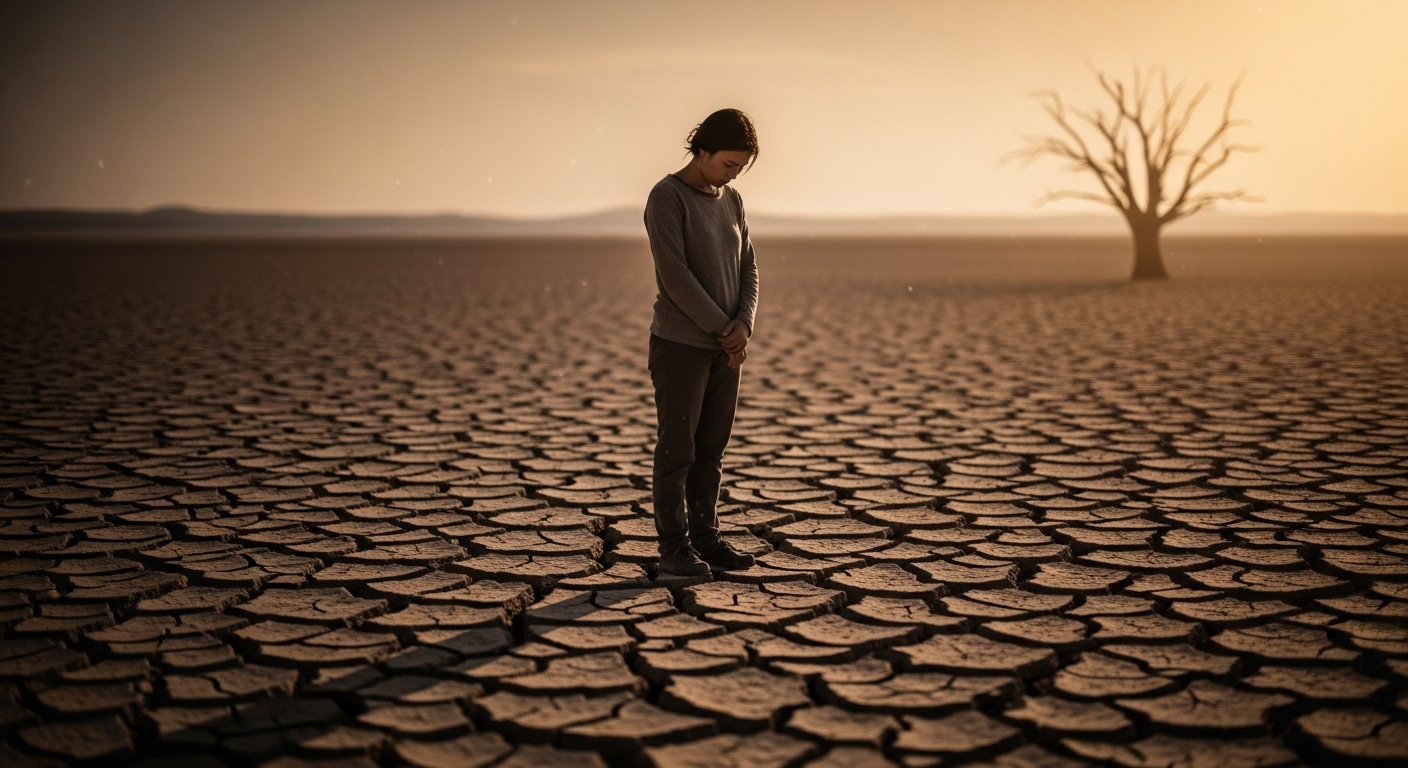Solastalgia: The Emotional Toll of Environmental Change
Climate anxiety's lesser-known cousin, solastalgia, is reshaping our relationship with home and place. This unique form of distress, triggered by environmental changes in one's local surroundings, is becoming increasingly prevalent in our rapidly changing world. As landscapes transform and familiar environments alter, many are left grappling with a profound sense of loss and displacement - even without physically relocating. Read below to explore this emerging phenomenon and its far-reaching implications for mental health, community bonds, and our collective future.

This concept emerged from Albrecht’s observations of Australian communities affected by large-scale coal mining operations. Residents reported feelings of powerlessness, depression, and a loss of place identity as their once-familiar landscapes were dramatically altered. Since then, solastalgia has gained traction in academic circles and is increasingly recognized as a legitimate psychological phenomenon with wide-ranging implications.
Manifestations of Solastalgia in Modern Society
Solastalgia manifests in various ways across different communities and environments. In coastal areas, rising sea levels and erosion can lead to a gradual loss of beaches, homes, and entire neighborhoods, leaving residents with a profound sense of displacement. In agricultural regions, changing weather patterns and prolonged droughts can transform once-fertile lands into barren landscapes, disrupting generations-old farming practices and cultural traditions.
Urban dwellers are not immune to solastalgia either. Rapid gentrification, loss of green spaces, and the constant churn of construction can leave long-time residents feeling alienated in their own neighborhoods. Even subtle changes, like the disappearance of certain bird species or the decline of local flora, can trigger feelings of loss and disconnection from one’s environment.
The Psychological Impact of Environmental Change
The psychological effects of solastalgia can be profound and far-reaching. Many individuals experience symptoms similar to those associated with grief, including sadness, anxiety, and a sense of helplessness. The loss of familiar landscapes and ecosystems can disrupt one’s sense of place identity, leading to feelings of disorientation and rootlessness.
Research has shown that solastalgia can exacerbate existing mental health issues and contribute to the development of new ones. A study published in the International Journal of Environmental Research and Public Health found that individuals experiencing solastalgia were more likely to report symptoms of depression, anxiety, and post-traumatic stress disorder.
Moreover, the collective experience of solastalgia within a community can lead to social fragmentation and the erosion of cultural traditions tied to the local environment. This loss of shared identity and purpose can further compound the psychological distress experienced by individuals.
Coping Strategies and Resilience Building
As awareness of solastalgia grows, researchers and mental health professionals are developing strategies to help individuals and communities cope with environmental change-induced distress. One approach involves fostering environmental stewardship and community engagement. By actively participating in local conservation efforts or environmental restoration projects, individuals can regain a sense of agency and connection to their changing landscapes.
Psychologists also recommend practices that strengthen place attachment and promote mindfulness of one’s surroundings. This might include activities like nature journaling, local history projects, or community storytelling initiatives that celebrate the evolving relationship between people and their environment.
Building resilience at the community level is equally important. Creating spaces for collective mourning and celebration of changing landscapes can help process shared experiences of loss and foster a sense of solidarity. Additionally, incorporating traditional ecological knowledge and adaptive practices into community planning can help maintain cultural continuity in the face of environmental change.
Solastalgia and the Future of Environmental Policy
The recognition of solastalgia as a legitimate health concern has implications for environmental policy and urban planning. Policymakers are increasingly being called upon to consider the psychological impacts of environmental decisions, not just the economic and ecological factors.
Some regions have begun incorporating solastalgia assessments into environmental impact studies for major development projects. This approach acknowledges that the wellbeing of communities is inextricably linked to the health of their local environments and seeks to mitigate the psychological harm caused by landscape alterations.
Looking ahead, addressing solastalgia will likely require a multidisciplinary approach, combining insights from psychology, ecology, urban planning, and cultural studies. As our planet continues to change, understanding and mitigating the emotional toll of these transformations will be crucial for maintaining individual and collective wellbeing.





